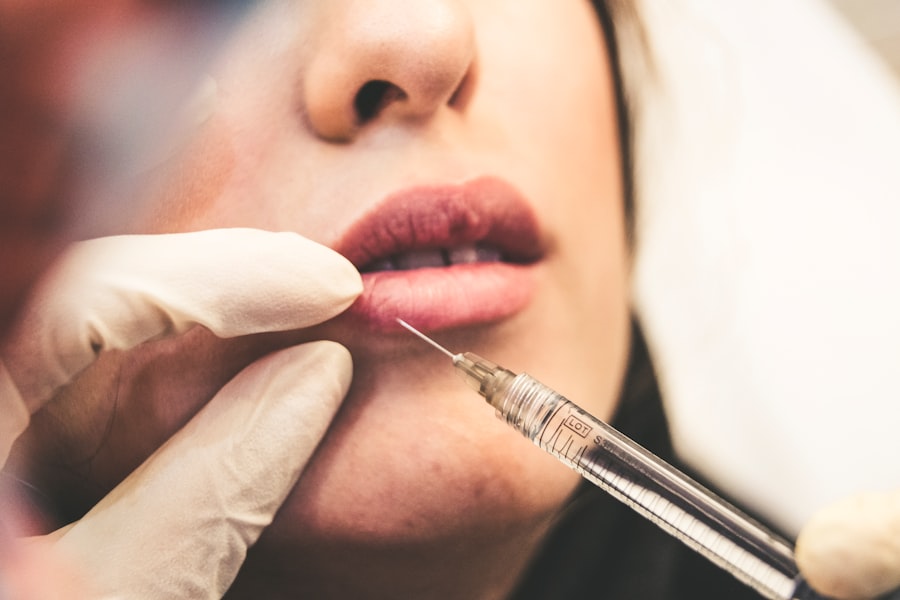In the quest for smooth, hair-free skin, many individuals are turning to laser hair removal as a viable solution for facial hair. This method has gained popularity due to its effectiveness and long-lasting results compared to traditional hair removal techniques. If you’ve ever felt self-conscious about unwanted facial hair, you may be considering this advanced technology as a way to enhance your appearance and boost your confidence.
Laser hair removal offers a modern approach that can save you time and effort in your grooming routine, making it an appealing option for those looking to achieve a more polished look. As you explore the possibilities of laser hair removal, it’s essential to understand how the process works, its effectiveness, and what you can expect in terms of results and potential side effects. This article will guide you through the intricacies of laser hair removal for facial hair, helping you make an informed decision about whether this treatment is right for you.
By delving into the science behind the procedure, comparing it with other hair removal methods, and discussing aftercare, you’ll be better equipped to embark on your journey toward smoother skin.
Key Takeaways
- Laser hair removal is a popular method for removing facial hair, offering long-term results and minimal maintenance.
- The process works by targeting the hair follicles with concentrated light, damaging them to inhibit future hair growth.
- Laser hair removal is generally effective for reducing facial hair, with many individuals experiencing permanent hair reduction after several sessions.
- Potential side effects of laser hair removal for facial hair include redness, swelling, and skin irritation, but these are usually temporary.
- When comparing laser hair removal to other facial hair removal methods, it is important to consider factors such as cost, pain level, and long-term results.
How Does Laser Hair Removal Work?
Laser hair removal operates on a straightforward yet sophisticated principle: it uses concentrated beams of light to target and destroy hair follicles. When you undergo this treatment, a laser emits a specific wavelength of light that is absorbed by the pigment in your hair. This absorption generates heat, which damages the follicle and inhibits future hair growth.
The procedure is designed to be precise, ensuring that surrounding skin remains unharmed while effectively targeting unwanted hair. During your session, a trained technician will guide the laser over the areas of your face where you wish to remove hair. You may feel a slight tingling sensation or warmth as the laser works its magic.
The number of sessions required can vary based on factors such as hair thickness, color, and your skin type. Typically, multiple treatments are necessary to achieve optimal results, as hair grows in cycles and not all follicles are active at the same time. Understanding this process can help set realistic expectations for your treatment journey.
Effectiveness of Laser Hair Removal for Facial Hair

When it comes to effectiveness, laser hair removal has proven to be a reliable option for many individuals seeking to eliminate facial hair. Studies have shown that this method can significantly reduce hair growth after just a few sessions. For those with darker hair and lighter skin, the results tend to be even more pronounced due to the contrast in pigmentation, which allows the laser to target the hair follicles more effectively.
However, it’s important to note that results can vary based on individual factors such as hair color, skin tone, and hormonal influences. Many people report a substantial decrease in hair density and regrowth after completing their treatment series. While some may experience permanent hair reduction, others might find that maintenance sessions are necessary to keep unwanted hair at bay.
This long-term effectiveness makes laser hair removal an attractive alternative to temporary methods like shaving or waxing, which require frequent upkeep. As you consider this option, it’s essential to consult with a qualified professional who can assess your unique situation and provide tailored recommendations.
Potential Side Effects and Risks of Laser Hair Removal
| Side Effect | Description |
|---|---|
| Redness and Swelling | Common side effects that usually subside within a few hours |
| Skin Discoloration | Possible temporary changes in skin color, especially for those with darker skin tones |
| Blisters and Burns | Rare but possible if the laser is not used properly |
| Scarring | Uncommon, but can occur if the skin is not properly cared for after treatment |
| Eye Injury | Risk of damage to the eyes if proper eye protection is not used during treatment |
Like any cosmetic procedure, laser hair removal comes with its own set of potential side effects and risks. While many individuals tolerate the treatment well, some may experience temporary discomfort such as redness, swelling, or mild irritation in the treated area. These side effects typically subside within a few hours to a few days following the procedure.
However, it’s crucial to be aware that more severe reactions can occur in rare cases, including blistering or changes in skin pigmentation. To minimize risks, it’s vital to choose a reputable clinic with experienced technicians who use FDA-approved equipment. Prior to your treatment, you should discuss any medical conditions or medications you’re taking with your provider to ensure that laser hair removal is safe for you.
Additionally, following pre-treatment guidelines—such as avoiding sun exposure—can help reduce the likelihood of adverse effects. Being informed about these potential risks allows you to make a more educated decision about whether laser hair removal is suitable for your needs.
Comparing Laser Hair Removal to Other Facial Hair Removal Methods
When weighing your options for facial hair removal, it’s essential to compare laser hair removal with other popular methods such as shaving, waxing, and threading. Shaving is often seen as the quickest and most convenient option; however, it typically requires daily or weekly maintenance and can lead to issues like razor burn or ingrown hairs. Waxing offers longer-lasting results but can be painful and may cause skin irritation or allergic reactions in some individuals.
Threading is another alternative that many people favor for its precision and ability to shape eyebrows or remove fine hairs. While effective for short-term results, threading also necessitates regular upkeep and may not be suitable for larger areas of the face. In contrast, laser hair removal provides a more permanent solution by targeting the root of the problem—hair follicles—leading to long-term reduction in hair growth.
By considering these differences, you can better determine which method aligns with your preferences and lifestyle.
Factors to Consider Before Getting Laser Hair Removal for Facial Hair

Before committing to laser hair removal for facial hair, there are several factors you should take into account. First and foremost is your skin type and hair color; individuals with light skin and dark hair tend to see the best results due to the contrast that allows the laser to effectively target follicles. If you have lighter or gray hair, you may find that laser treatments are less effective since the laser relies on pigment absorption.
Another important consideration is your budget and time commitment. While laser hair removal can be more cost-effective in the long run compared to ongoing waxing or shaving expenses, the initial investment may be higher. Additionally, factor in the number of sessions required for optimal results; this could mean several visits over a few months.
Lastly, think about your pain tolerance; while many find the discomfort manageable, it’s essential to be prepared for some level of sensation during treatment.
Aftercare and Maintenance for Laser Hair Removal
Aftercare plays a crucial role in ensuring the success of your laser hair removal treatment. Following your session, it’s important to avoid sun exposure on the treated area for at least two weeks; this helps prevent pigmentation changes and allows your skin to heal properly. You should also refrain from using harsh skincare products or engaging in activities that may irritate your skin, such as hot baths or vigorous exercise.
In terms of maintenance, many individuals find that they require touch-up sessions every six months to a year after completing their initial treatment series. This helps maintain the results and address any stray hairs that may emerge over time. Staying hydrated and following a gentle skincare routine can also support your skin’s recovery process post-treatment.
By adhering to these aftercare guidelines, you can maximize the benefits of your laser hair removal experience.
Is Laser Hair Removal a Good Option for Facial Hair Removal?
In conclusion, laser hair removal presents a compelling option for those seeking a long-term solution for unwanted facial hair. With its ability to significantly reduce hair growth over time and its relative permanence compared to traditional methods, it’s no wonder that many individuals are opting for this advanced technology. However, it’s essential to weigh the pros and cons carefully before making a decision.
As you consider whether laser hair removal is right for you, take into account factors such as your skin type, budget, and personal preferences regarding pain tolerance and maintenance requirements. Consulting with a qualified professional can provide valuable insights tailored specifically to your needs. Ultimately, if you’re looking for an effective way to achieve smooth skin without the hassle of frequent upkeep, laser hair removal could very well be worth exploring further on your journey toward enhanced confidence and self-esteem.
If you are curious about the effectiveness of laser hair removal on facial hair, you may want to check out this article on inlaserhairremoval.com. This article discusses the various factors that can affect the success of laser hair removal on the face, as well as tips for achieving the best results. It is a helpful resource for anyone considering this treatment option.
FAQs
What is laser hair removal?
Laser hair removal is a cosmetic procedure that uses a concentrated beam of light (laser) to remove unwanted hair. The light is absorbed by the pigment in the hair follicles, which damages the follicle and inhibits future hair growth.
Does laser hair removal work on facial hair?
Yes, laser hair removal can be effective for removing facial hair. It is commonly used to target hair on the upper lip, chin, and jawline.
How many sessions are typically needed for laser hair removal on the face?
The number of sessions needed for laser hair removal on the face can vary depending on the individual and the specific area being treated. On average, most people require 6-8 sessions spaced several weeks apart to achieve optimal results.
Is laser hair removal on the face permanent?
Laser hair removal can lead to long-term hair reduction, but it is not always permanent. Some people may experience regrowth over time, although the hair that does grow back is often finer and lighter in color.
Are there any risks or side effects associated with laser hair removal on the face?
Potential risks and side effects of laser hair removal on the face may include temporary redness, swelling, and skin irritation. In rare cases, there is a risk of scarring or changes in skin pigmentation. It is important to consult with a qualified and experienced practitioner to minimize these risks.




